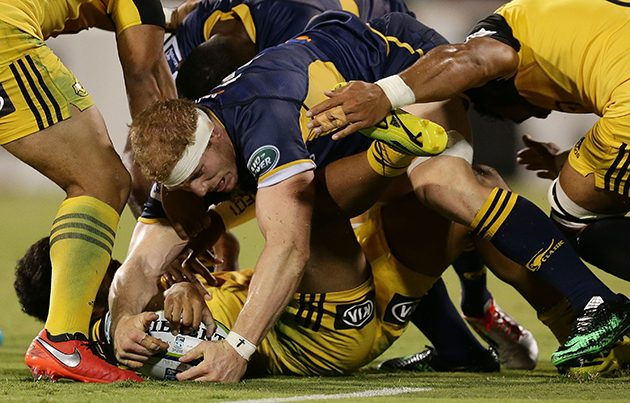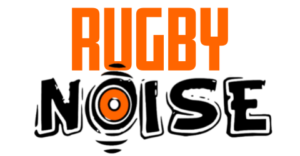To the layperson, the word breakdown cannot be associated with anything good. Some quick research conducted via any of the numerous dictionaries available unearths definitions like “a failure” as relates to a system or a relationship. For the rugby fan, however, the breakdown is arguably one of the most exciting intervals in a game where a momentary lapse in judgment by one team can mean agony for them and pure bliss for their opponents. Better yet, these gems may occur well over 100 times within a single game giving spectators that adrenaline rush that keeps them glued to the sport.
What do you do during a breakdown in rugby? During a breakdown in rugby, both teams compete for possession of the ball. A breakdown may be defined as the short period that occurs immediately after a tackle and the critical moments before and during the almost inevitable ruck or maul that follows. Since breakdowns are split-second high stakes moments, they often result in either one or a combination of infringements that further affect the outcome of the game.

A Brief Background
In order to truly understand why breakdowns are undeniably one of the most important times during a rugby match, one needs to go back in history to a time when the sport was still trying to figure itself out – a little over 150 years ago when it finally decided to part ways with its twin brother, Soccer (Association Football).
In the early 1800s, there was literally no distinction between Rugby and Soccer. Both sports more or less subscribed to the same unofficial rules. They included almost every and any combination of kicking, handling, and tackling – elements that are still “alive” in one form or another in both sports.
A large number of the sports historians however argue that the sport came into its own on one fateful day in 1823, when rugby’s forefather, William Web Ellis, allegedly had enough, picked up the ball that he and his colleagues were using to play and decided to quite literally run with it. This theory’s detractors nevertheless argue that it is at the very worst, unsubstantiated, or at best, an old wives’ tale.
Over the next two or three decades, the sport grew in leaps and bounds. Its first set of governing laws was drafted in Ellis’ former stomping grounds – the Rugby School in Warwickshire, England – and its first-ever match was held in late 1857 in Scotland
The Crossroads
The proverbial day of reckoning came in late October 1863 after the formation of the Football Association (FA). The then-new governing body then embarked on updating its rules to omit running while handling the ball, holding, tripping, and hacking (“chopping” at your opponents’ shin with kicks).
This omission did not sit well with rugby’s other unofficial founding father – F. M. Campbell,
who withdrew his team from the FA and sparked the mass exodus that would lead to the creation of the Rugby Football Union less than a decade later.
Campbell’s refusal to play ball (or in this case, Association Football) along with the defiance of those who joined him gave Rugby its identity and with it, its gift of scrums, rucks, mauls, and of course those magical breakdowns.
Breaking Down the Breakdown
Breakdowns are all about perspective – which side of the ball you’re on and how a play develops. Put simply, a breakdown has one constant stage that commences it (the tackle) and two varying stages which may occur independently or one after the other.
The starting point (the tackle) is orchestrated for a simple reason – it stops a player from the opposing team from running with the ball and gives the other team the opportunity to contend for the possession of the ball. Common sense dictates that only players who carry the ball can be tackled.
Once a tackle commences, it is only deemed completed as soon as the knee of the tackled player touches the ground. The tackler (s) are then expected to give the tackled player a chance to get back on their feet before re-engaging or rolling away and clearing out from the play.
The rules further dictate that players other than those directly involved in the play (tackler(s) and tackled player) must approach the play from behind. This serves two purposes: it first and foremost protects all players directly involved in or joining a play and affords the tackled player a fighting chance to either pass, push or position the ball in their desired direction (mostly away from the oncoming opposition and toward their team members).
The Maul and the Ruck
In many instances, tackles often result in mauls or vice versa. A maul happens when one or more opposing players grab onto the player with the ball. For it to remain a maul, the players involved must stay on their feet with the exception of the player(s) with the immediate possession of the ball who may go to the ground as long as they “get rid” of the ball as quickly as possible.
Those players who are not immediately engaged in the maul or who leave it at any point before it’s complete are required to position themselves behind the rear foot of the backmost player until either the player who possesses the ball leaves the maul, carries over the sidelines or goes to the ground with the ball starting a ruck.
A five-second time limit applies to the end of a maul and a team is required to ensure that the ball emerges afterward. Mauls may only restart once and can be deemed unsuccessful if it collapses on its own (without any form of unfair play by either team).
Strategy
The whole point of a breakdown is to win possession of the ball meaning that one time must apply the necessary pressure allowed within the rules to ensure their opponents turn over the ball. It is often regarded as one of the most dangerous times of the game as it occurs during free play where there are many constantly-moving parts.
A referee can only do so much to monitor the play since he must allow play to develop naturally for as long as possible so as to not reduce a game to a bunch of stops and restarts. Traditionally, loose forwards, especially openside flankers were charged with the responsibility of forcing their opponents to commit turnovers.
Things have however slightly changed over the past few years and teams now actively train their entire squad in the art for one main reason – it is all a matter of timing and positioning and the nearest possible player (regardless of the position they play) are always best-positioned for the job.
Timing is critical since the opposing team’s best chance to win possession is the ball carrier from the other team has little to no support. Winning a turnover boils down to simply getting to the breakdown first, being on your feet, and maintaining a low body position.
This allows an opposing player to get the ball into his hands before the downed player’s teammates (the support) arrive at the breakdown and form a ruck. Once the ruck is formed, the opposing player’s chances of getting their hands on the ball literally end since the rules dictate that they may not use their hands.
